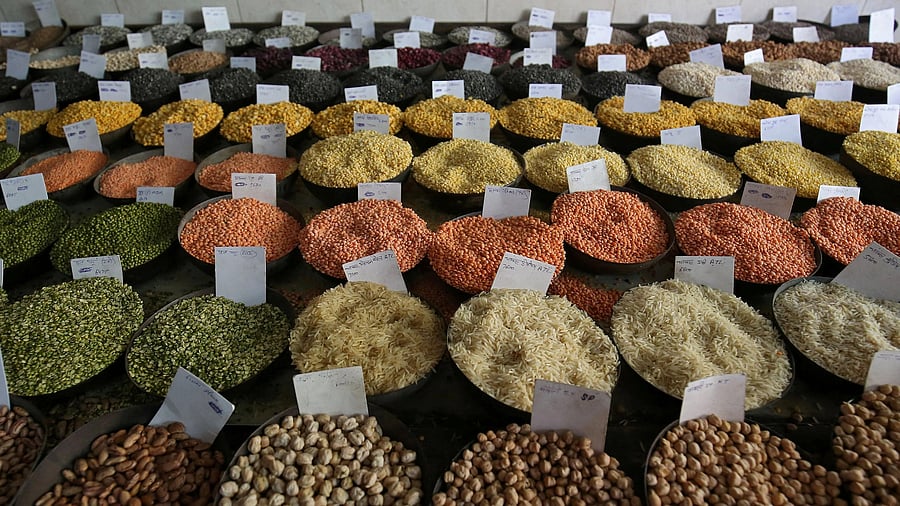
FILE PHOTO: Price tags are seen on the samples of rice and lentils that are kept on display for sale at a wholesale market in the old quarters of Delhi.
Credit: Reuters photo
New Delhi: The annual wholesale prices recorded deflation for the second consecutive month in July on the back of decline in food and fuel prices, official data showed on Thursday.
Factory gate inflation based as measured by the Wholesale Price Index (WPI) hit a two-year low of -0.58 per cent in July from -0.13 per cent recorded in the previous month.
The wholesale food inflation was at a decadal low. It posted a deflation of 2.15% during the month under review. Fuel and power became cheaper by 2.43% year-on-year in July. However, inflation in manufactured items increased to 2.05% in July from 1.97% in June, the Ministry of Commerce & Industry data showed.
In July there was a sharp drop in prices of vegetables, fruits, pulses and spices on a year-on-year basis. Vegetable prices in the wholesale market dipped by 29% year-on-year in July, the sharpest fall since December 2022. Pulses became cheaper by 15.1%; spices by 15.6% and fruits by 2.7% on a year-on-year basis. Cereals inflation fell to 1.4%, the lowest in 46 months.
The decline in wholesale price inflation is in line with the easing in the retail prices. The headline retail inflation as measured by the Consumer Price Index (CPI) fell to an eight-year low of 1.55% in July, as per the National Statistics Office data released earlier this week.
“While low food prices help in providing succour to the consumption demand, however, a sustained decline in food prices acts as a downside risk of lowering the incomes of households which are dependent on the farming activity,” said Paras Jasrai, Associate Director at India Ratings and Research.
A closer look at the retail and wholesale price trends in various items portrays an emerging risk of a similar dimension. The retail inflation of various items such as cereals and fruits is much higher than their wholesale trends. Similar has been the case in items such as spices and pulses which have witnessed a decline in their levels both at the retail and wholesale level, but the decline is sharper in the latter than the former,” Jasrai remarked.
“A sustenance of such a trend can put pressure on farm incomes which can lead to derailment of the recovery in rural demand that we have been witnessing for some quarters,” he added.
The core inflation edged up to a three-month high of 1.1% in July 2025 as jewellery prices grew at record pace of 28.4%. However, a continued decline in base metal prices coupled with lower inflation intensity in other items helped in keeping core inflation low.